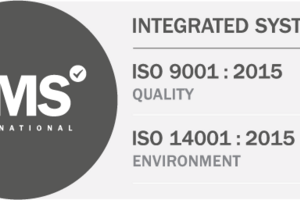12 October 2015
Greenlite Explains: How will the phase-out of halogen lamps affect your retail business?
The EU has upheld its decision to ban mains voltage directional halogen lamps from September 2016. We examine the ban, why it's happened, and what it means for the retail lighting sector.
Commercial retail LEDs look set for a boost; EU regulation on halogen is inching nearer. Understanding the trends is crucial for all shops future proofing their display offering.
Here at Greenlite Lighting Solutions, we believe the phase out of halogen bulbs provides a real opportunity. By embracing LED alternatives, retailers can cut their lighting costs without comprising on light quality.
“Although halogen lights are cheaper to buy than more energy efficient lights such as LEDs, they are more energy intensive and require replacing with greater frequency. This means higher electricity bills and a larger maintenance burden,” says our MD Bob Hall.
“By switching to LED lighting, the savings on energy and maintenance can quickly rack up, particularly in the retail sector, where lighting can account for up to 50% of a store’s energy use.”
Key things to know about the forthcoming halogen ban; exactly what will be banned, and when?
The European Commission will ban mains voltage halogen directional lamps in the EU from September 2016. There had been some debate over whether to include non-directional halogen lamps in the ban too.
An additional ban on all non-directional bulbs rated energy class C or lower begins September 2018.
Why are these lights being banned?
The idea is to take inefficient lights off the EU market, saving energy and minimising environmental harm. The European Commission has previously said switching to energy efficient lamps could save the equivalent of Portugal’s annual electricity consumption; cutting CO2 emissions by 15.2m tonnes by 2025.
How does the ban affect retailers?
Directional lights are crucial in the retail sector, because they showcase and spotlight products, building consumer interest and influencing sales. Now that the halogen directional lamps will be banned, retailers should consider how they can source greener alternatives to directional lighting.
Why are some people arguing against the ban?
Some people argue LED lights aren't available at sufficiently competitive capacity or price yet. They fear the ruling risks damaging retailers and hurting free markets.
But the European Council for an Energy Efficient Economy says LED lamps in Europe are moving ahead faster than previously expected. “Approximately 50% of the LED lamps purchased and tested for this study already exceed the 2016 price and performance levels that were anticipated by the Commission,” said Nils Borg, the Council's Executive Director.
“One model available on the European market in 2014 already exceeds the anticipated 2018 level on efficacy and the 2020 level on price.”
Doesn't halogen give better quality light than LED?
No, LEDs can, in fact, offer superior directional lighting. Good quality lighting really can improve the overall appearance of a product or display. In this way, greener, efficient lighting can directly benefit sales.
Can I be sure I'm choosing the right LED product?
As with any new technology, the choice can be bewildering. Fortunately, at Greenlite we have proven experience in the retail sector. We can offer you comprehensive advice, plus you can ask for references from our retail customers, most of whom have already switched to greener LED alternatives.
Can I afford to embed LED lighting?
Right now, some LED lights are more expensive than their less environmentally friendly counterparts. For this reason, to help you switch to the most efficient, sustainable and advanced directional light, Greenlite's bespoke financing scheme is here to help. We can fund the whole project – and savings can be made from day one. There’s no catch and no commercial risk to your organisation.


